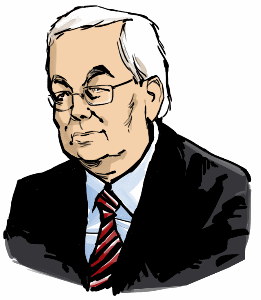© Gunnar Tómasson
31, desember 2014.
Don Quixote de la Mancha – RIP
Extract from an old working note.
While the Shakespeare Authorship Issue is well known among the general reading public, much less publicity has attended the like issue with respect to Don Quixote. Yet, the latter work contains no less than thirty-three direct statements to the effect that its ‘true’ author was not Miguel de Cervantes Saavedra but someone named Cid Hamet Benengeli.
The identity of Cid Hamet Benengeli remains a mystery, but there is evidence on record to suggest that Francis Bacon was the real author of Don Quixote de la Mancha:
„Another curious case of cryptography was presented to the public in 1917 by one of the best of the Bacon scholars, Dr. Alfred von Weber Ebenhoff of Vienna. Employing the same systems previously applied to the works of Shakespeare, he began to examine the works of Cervantes…. Pursuing the investigation, he discovered overwhelming material evidence: the first English translation of Don Quixote bears corrections in Bacon’s hand. He concluded that this English version was the original of the novel and that Cervantes had published a Spanish translation of it.“ (J. Duchaussoy, Bacon, Shakespeare ou Saint-Germain?, Paris, La Colombe, 1962, p. 122 – in Umberto Eco’s Foucault’s Pendulum, Harcourt Brace Jovanovich, Publishers, New York, 1989, p. 406.)
There is also internal literary evidence in Don Quixote itself which suggests a direct, but unknown, link between the work and an earlier play by William Shakespeare:
„It is impossible to help but notice now and then that Armado [of Shakespeare’s ‘Love’s Labour’s Lost’ – insert] is extraordinarily like Don Quixote in his consistent overestimate of himself and in his insistence on imagining himself a superhuman storybook hero. […]
„There is something rather pleasant in the thought that Shakespeare might be borrowing from Miguel de Cervantes, the Spanish author of the Don Quixote saga, since Cervantes was almost an exact contemporary of Shakespeare’s and by all odds one of the few writers, on the basis of Don Quixote alone, worthy of being mentioned in the same breath with Shakespeare.
„There is only one catch, but that is a fatal one. The first part of Don Quixote was published in 1605, a dozen years at least after Love’s Labor’s Lost was written.“ (Isaac Asimov, Asimov’s Guide to Shakespeare, Avenel Books, New York, 1978, Vol, I, pp. 431-2.)
In this end-of-year blog, further light is cast on the subject matter through a combination of key texts, all or some of which will be recognized by readers familiar with Saga and/or Shakespeare literature.
In the interest of brevity, comment will be kept to an absolute minimum.
***
I. Who is Don Quixote de la Mancha?
2604 = Páfinn (The Pope)
9010 = Petrus Romanus (Last Pope in Malachy‘s Prophecy)
6002 = Then, fall Caesar! (Dying words of Ruler of Rome)
17616 = El ingenioso hidalgo don Quixote de la Mancha (Spanish book title)
II. A.k.a. This Earle of Oxford in Shakespeare Myth
1000 = Light of the World
9539 = Don Quixote de la Mancha
101792 = This Earle of Oxford… ¹
-11900 = Miguel Cervantes de Saavedra (Forgotten Fart – Died the same day as Will Shakspere)
4000 = Flaming Sword
104431
¹
29113 = This Earle of Oxford, making of his low obeisance to Queen Elizabeth,
23292 = happened to let a Fart, at which he was so abashed and ashamed
14780 = that he went to Travell, 7 yeares.
19619 = On his returne the Queen welcomed him home,
14988 = and sayd, My Lord, I had forgott the Fart.
101792
III. “Documenting” the Saga-Shakespeare Connection
8542 = Bók þessi heitir Edda.
20156 = Hana hevir saman setta Snorri Sturlo son
15735 = eptir þeim hætti, sem hér er skipat.
10539 = Er fyrst frá ásum ok Ymi ²
18224 = þar næst skalldskap ok heiti margra hluta.
17723 = Síþaz Hatta tal er Snorri hevir ort
13512 = um Hak Konung ok Skula hertug.
104431
²
1000 = Light of the World
9539 = Don Quixote de la Mancha
10539 = Er fyrst frá ásum ok Ymi
IV. Forse altro cantera con miglior plettro.
17616 = EL INGENIOSO HIDALGO DON QVIXOTE DE LA MANCHA
-1000 = Darkness
19129 = Forse altro cantera con miglior plettro. (Stand alone sentence at end of Vol. I)
22601 = Perhaps another will sing with a better voice. (English translation)
9299 = Njáll Þorgeirsson
-6960 = Jarðlig skilning (kveðin í kútinn)
43746 = Brennu-Njálssaga ³
104431
³
6257 = Mörðr hét maðr.
12685 = Höfðingjaskipti varð í Nóregi.
11274 = Fara menn við þat heim af þingi.
13530 = Ok lýk ek þar Brennu-Njálssögu.
43746
V. Perhaps another will sing with a better voice. – I
22601 = Perhaps another will sing with a better voice. (English translation)
Njáll Þorgeirsson – Brennu-Njálssaga, 129. k.
28646 = „Nú skaltú sjá, hvar vit leggjumsk niðr ok hversu ek býg um okkr,
16690 = því at ek ætla mér hvergi heðan at hrærask,
15231 = hvárt sem mér angrar reykr eða bruni;
21263 = munt þú þá næst geta, hvar beina okkarra er at leita.”
104431
VI. Perhaps another will sing with a better voice. – II
11900 = Miguel Cervantes de Saavedra
2092 = PAPEY (Pope Island)
Dráp Kjartans Ólafssonar – Laxdæla, 49. k.
20155 = „Víst ætlar þú nú, frændi, níðingsverk at gera,
21895 = en miklu þykkir mér betra at þiggja banaorð af þér, frændi,
7286 = en veita þér þat.”
Heimsljós undir feldi
– 11000 = Þorgeirr Tjörvason (Law-speaker at Advent of Christianity)
Skapanorn – Weird Sisters – Fates
12881 = „Misjöfn verða morginverkin.
23371 = Ek hefi spunnit tólf álna garn, en þú hefir vegit Kjartan.”
Konungr til Sturlu Þórðarsonar
15851 = Þat ætla ek, at þú kveðir betr en páfinn.
104431
NB.
9354 = Urðr-Skuld-Verðandi (Saga Fates)
-1 = ´Slain´ Monad
3394 = Jesús
12747 = Guðrún Ósvífrsdóttir
***
A calculator for converting letters to cipher values is on the Internet at:
http://www.light-of-truth.com/ciphersaga.htm

 Gunnar Tómasson
Gunnar Tómasson